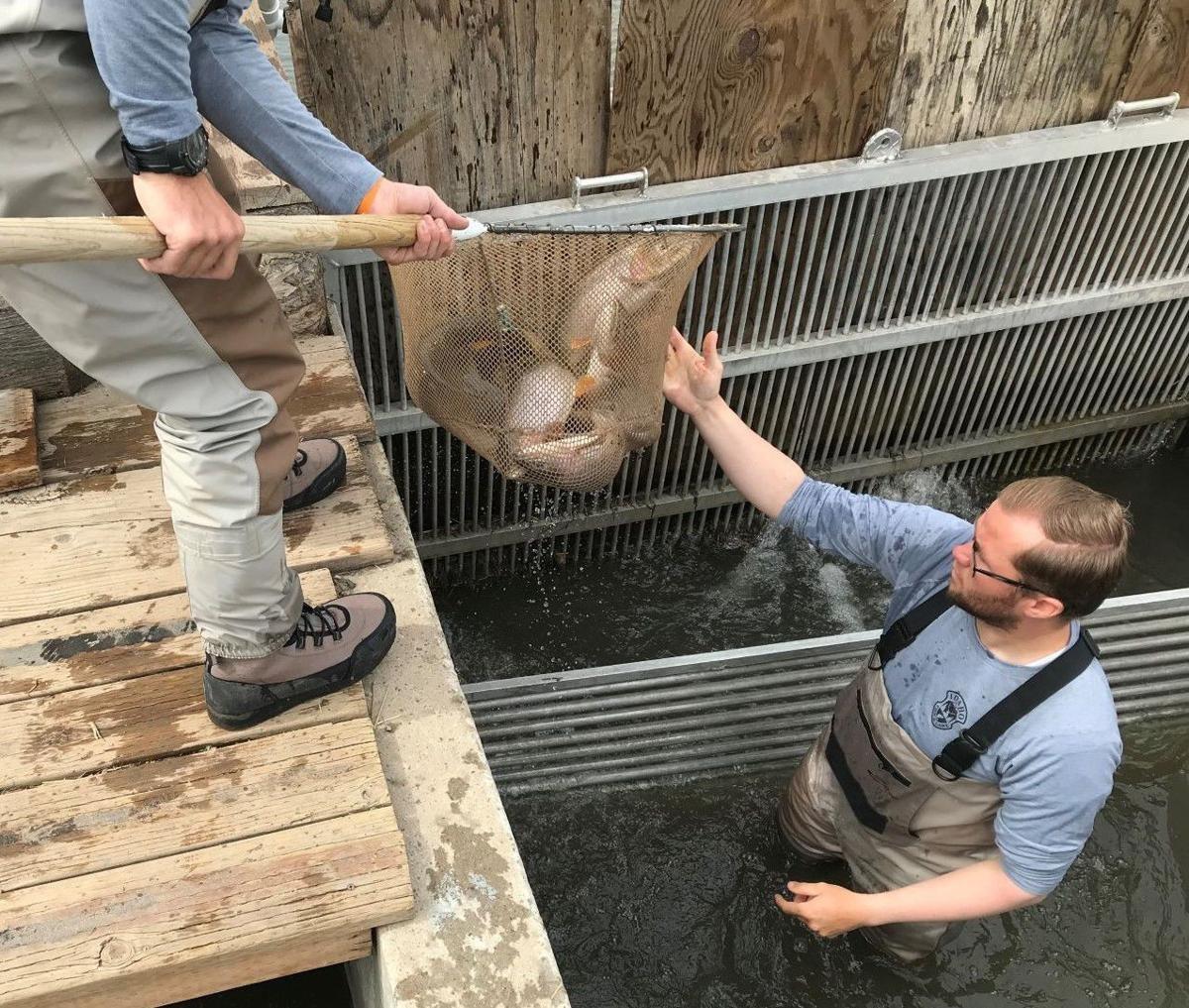Stream projects done in partnership with ranchers help trout rebound

By John O’Connell
Intermountain Farm and Ranch
SODA SPRINGS — Regional fishery experts believe stream restoration projects done in partnership with cattle ranchers have helped make this spring one of the best on record for the Upper Blackfoot River's migrating cutthroat trout.
For several years, the Idaho Department of Fish and Game has counted cutthroat trout making their spring migration to spawn in tributaries at the headwaters of the Blackfoot River.
During a four-week period this spring, IDFG counted more than 1,300 mature trout trapped at a weir upstream of Blackfoot Reservoir, marking the second highest total since 2001. The count dipped to just 16 fish in 2005, followed by 19 fish in 2006. Both were dry years.
"Because each mature female trout carries roughly 1,500 eggs, the annual migration is a major driver of fish abundance in this historic cutthroat stronghold," said Arnie Brimmer, IDFG regional fishery biologist.
Fishery experts acknowledge recent good water years have played a significant role in the trout rebound. But they also give credit to a collaboration of mining companies and conservation groups that has worked closely with Caribou County ranchers, called the Upper Blackfoot Confluence.
"This year's spawning run is great news for anglers," said Warren Colyer, with Trout Unlimited. "It is also a big boost for landowners, companies, agencies and citizen groups who have worked for years to improve fish habitat in the Upper Blackfoot."
UBC was founded in 2011 and includes representation from Bayer U.S., J.R. Simplot Co., Nutrien, Trout Unlimited and Idaho Conservation League.
The mining companies have contributed more than $1.9 million toward Upper Blackfoot habitat projects, with state, federal and private sources contributing another $1.7 million in grants.
The collaboration has implemented about 15 projects to date and plans to invest more than $220,000 on four additional projects this year.
"I think (the recent trout count) is a first indication that the projects are helping," said Jason Beck, IDFG regional wildlife habitat biologist. "We've had other good water years that weren't this high in the counts. It's still early to see a lot of responses, but we've been doing collaborations in there for almost a decade and they're really coming to a head right now."
Will Whelan, who is UBC's facilitator, said a 2018 project to restore the lower reach of a major tributary, Sheep Creek, resulted in a doubling of cutthroat nests, known as redds, during the following year.
Whelan said participating ranchers, including families involved in Bear Lake Grazing Co., have also reaped benefits, such as upgraded water diversions.
Another major project, implemented last spring, entailed UBC paying for the installation of cattle fencing within IDFG's 2,500-acre Blackfoot River Wildlife Management Area.
From June through early July, the Bear Lake Grazing Co. moves between 1,000 and 2,000 head of cattle from range near the tributaries to the wildlife management area. Beck explained the timeframe is cutthroat spawning season, when sediment from grazing cattle tends to bury or displace trout eggs.
"We haven't looked directly at the eggs, but we've seen a dramatic decrease in sediment in those streams," Beck said.
Beck said the partners work to provide the ranchers access to a greater amount of forage at the wildlife management area than they would otherwise receive to incentivize participation.
Beck believes the arrangement has also resulted in ecological benefits for the wildlife management area, half of which is grazed. The other half is left untouched to retain cover for nesting birds.
Beck said cattle in the grazed portion clear away old vegetation, causing grass to come back greener later in the year. The availability of verdant vegetation in the late summer is good for both elk and birds, Beck said.
"(The ranchers) have been really impressed with the response of the wildlife management area to their grazing," Beck said.
Whelan said the 2020 UBC projects include a second year of moving cattle from the tributaries to the wildlife management area, restoring a channel of Chippy Creek, relocating a portion of Diamond Creek Road that frequently washes out and working with Bear Lake Grazing Co. on adding new fencing along Sheep Creek to further aid in restoration.
"This is a great place to invest, but it's going to take time," Whelan said. "It's been a patient, long-term focus by this collaborative group. After putting in this work, it's been great news to see the (trout) numbers rebound."
Still can't find what you are looking for? Find by topic:
- Achievement Award (YF&R)
- Actions Alerts
- Advocacy
- Ag Ambassadors
- American Farm Bureau
- American Farm Bureau Policy Book
- Archive Photos
- Articles
- Board of Directors
- Calendar - State/District
- Calendar - County
- Capitol Reflections
- Collegiate Chapters
- Committee Application Form
- Commodities
- Convention Annual
- County Presidents & Board Information
- County Resource Page
- Delegate Form
- Discount Programs
- Discussion Meet
- Discussion Meet - High School
- Education Programs
- Events
- Excellence Award (YF&R)
- Expense Voucher
- Flickr
- Gem State Producer
- High School Discussion Meet
- High School Speech Contest
- Hope in Idaho Ag
- House of Delegates Credentials Form
- IFBF Board of Directors
- IFBF Policy Book
- IFBF Staff
- Insurance
- Legislative Action Program
- Legislative Issues
- Library
- MAC Trailer
- Magazines
- Map My Benefits
- Member Benefits
- Member Discount
- Membership Application
- Mission Statement
- Moving Agriculture to the Classroom
- Newsletter Sign up
- News Releases
- News Room
- Open Range Law
